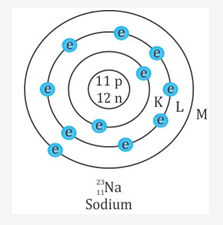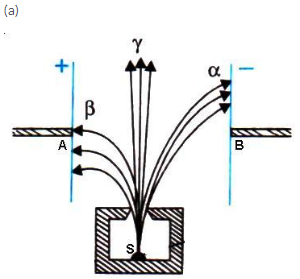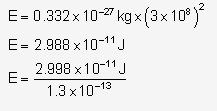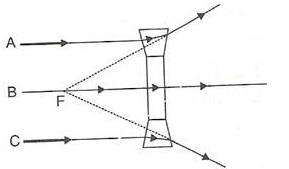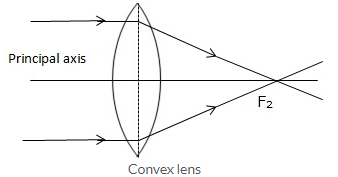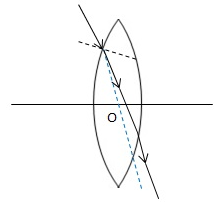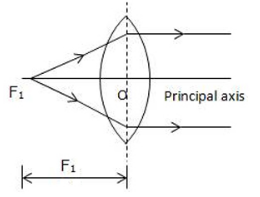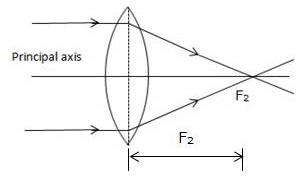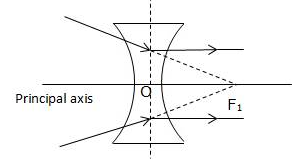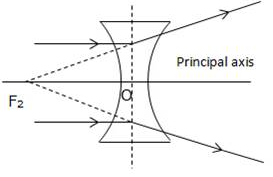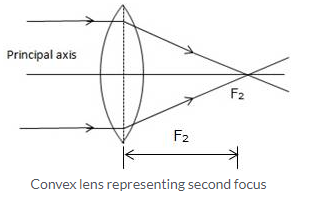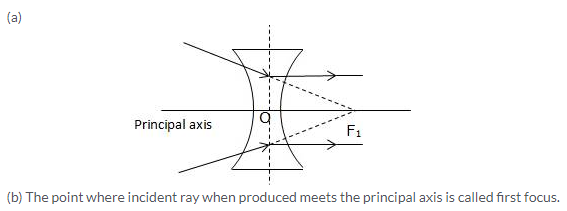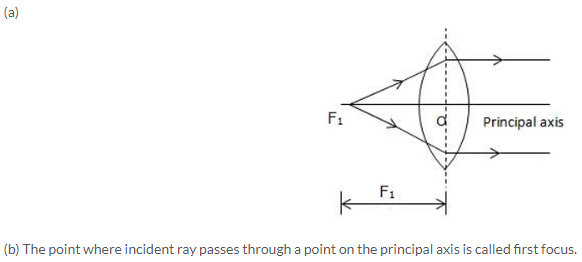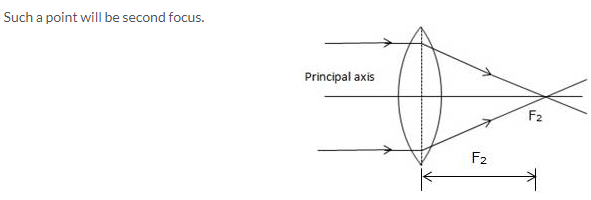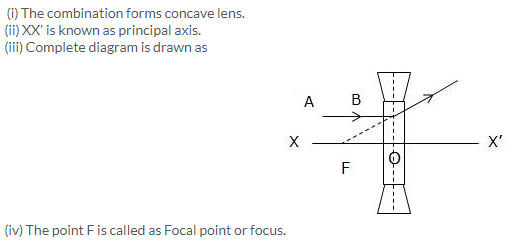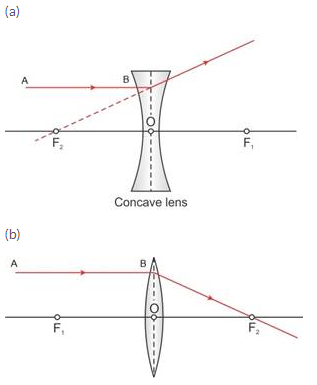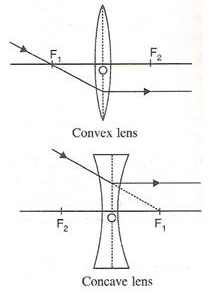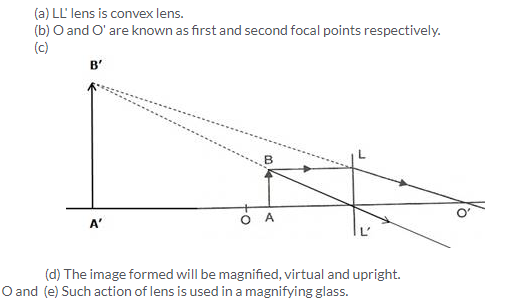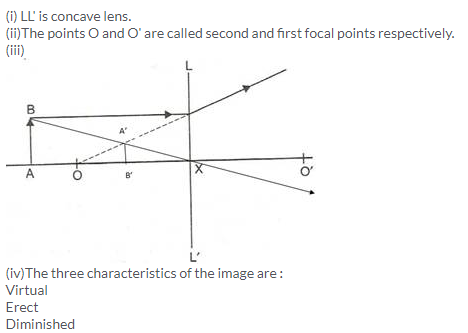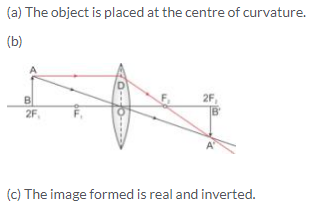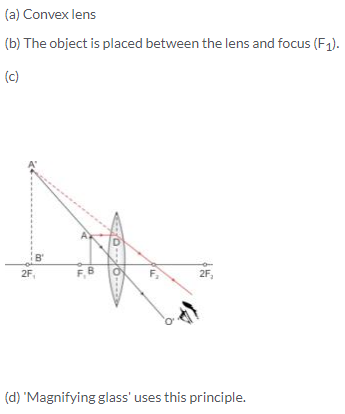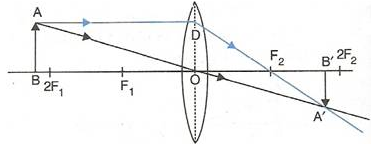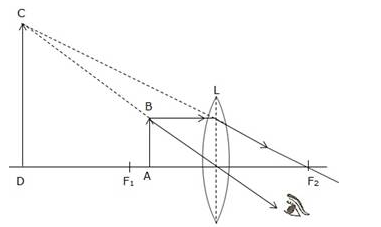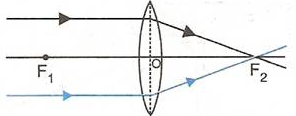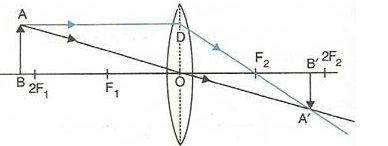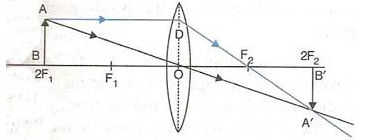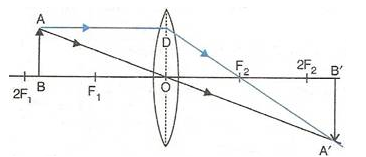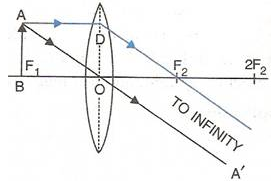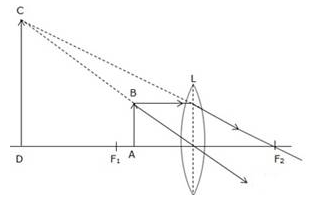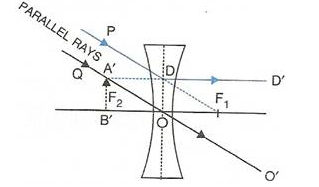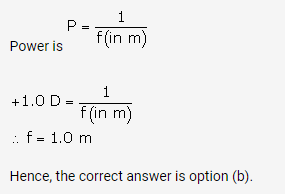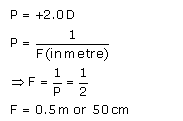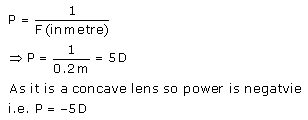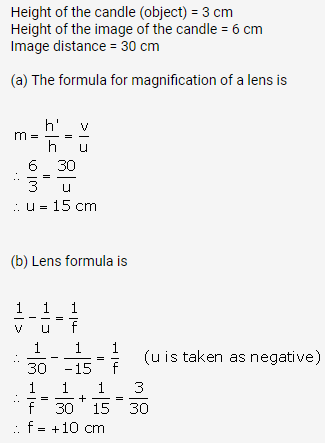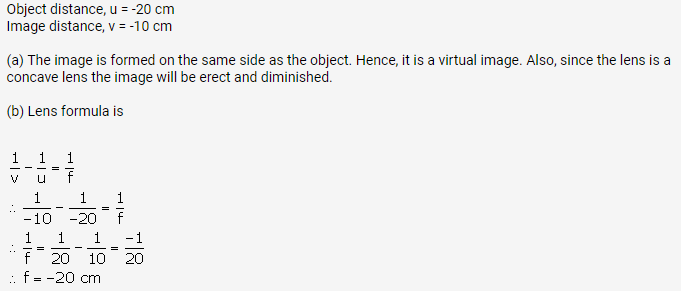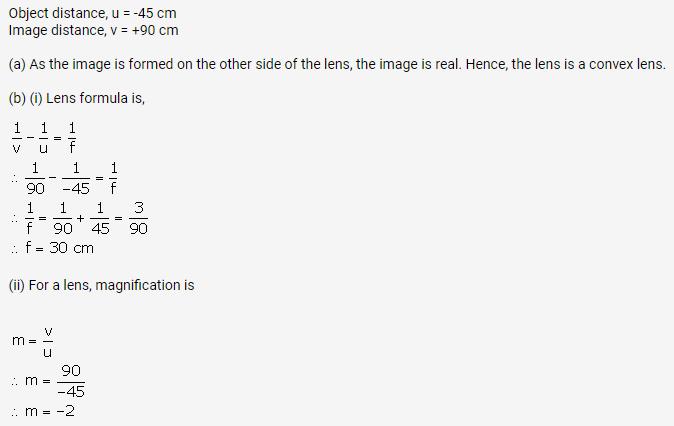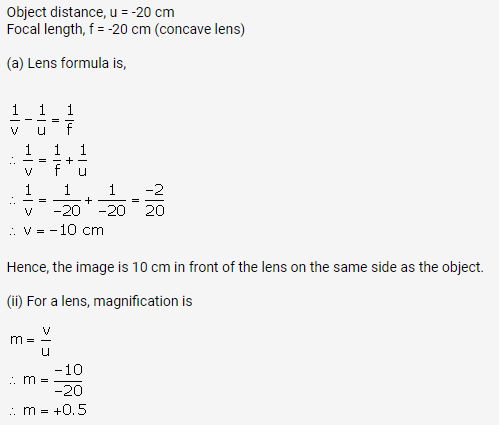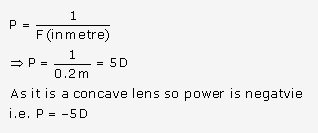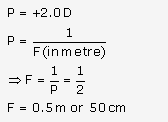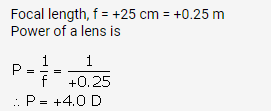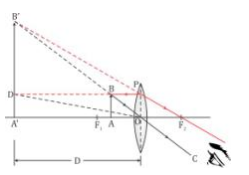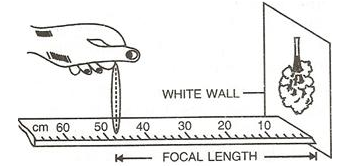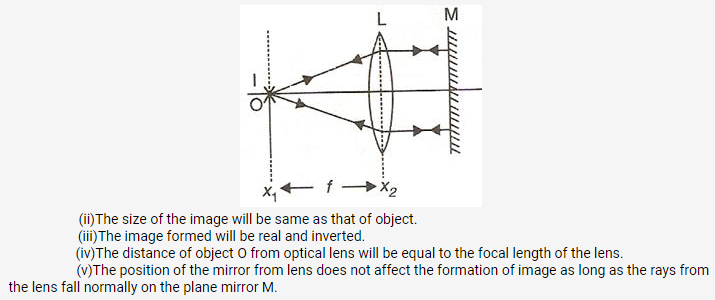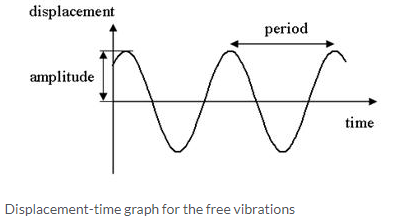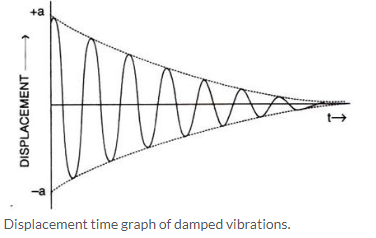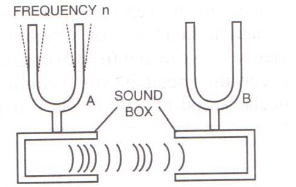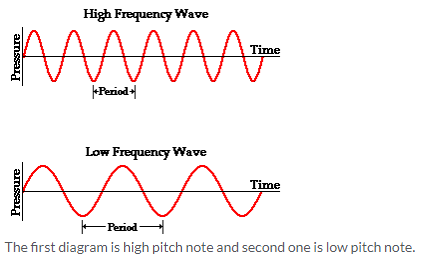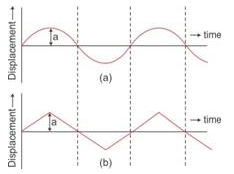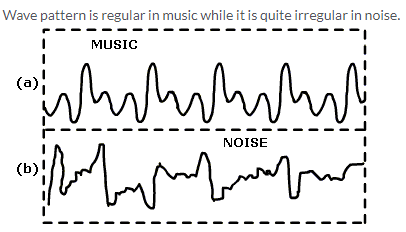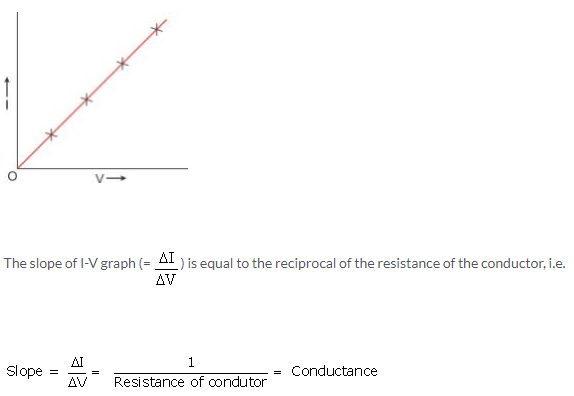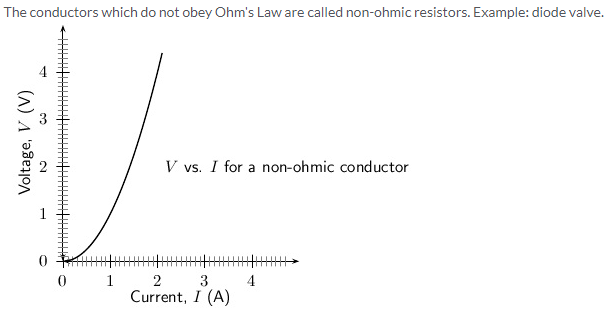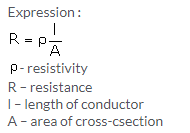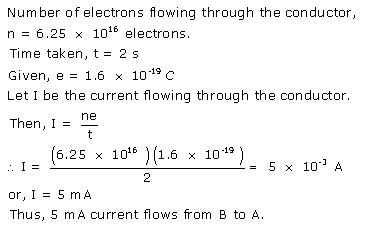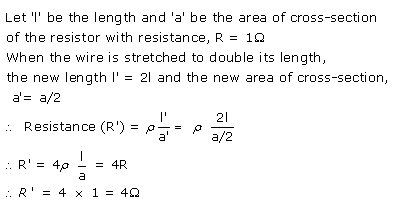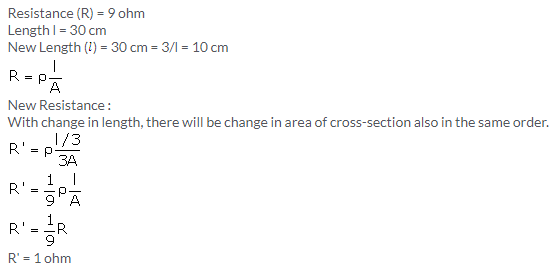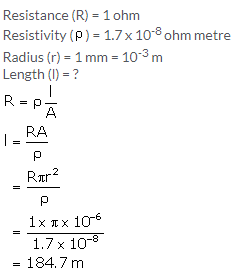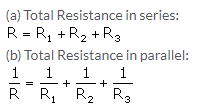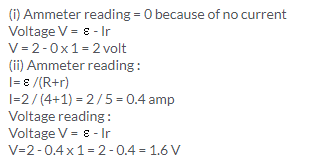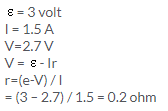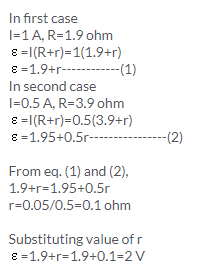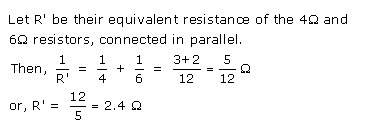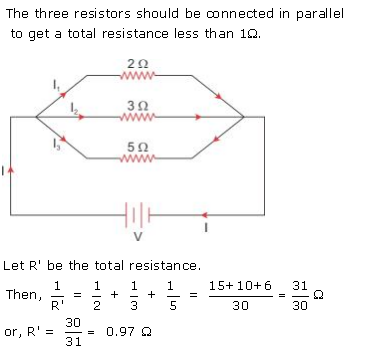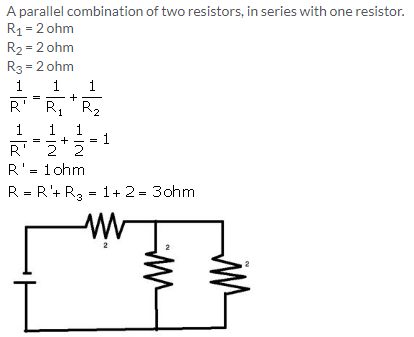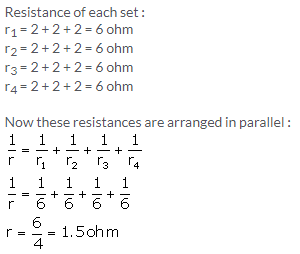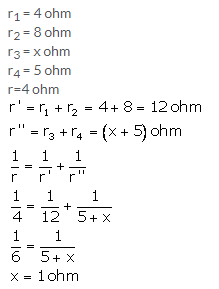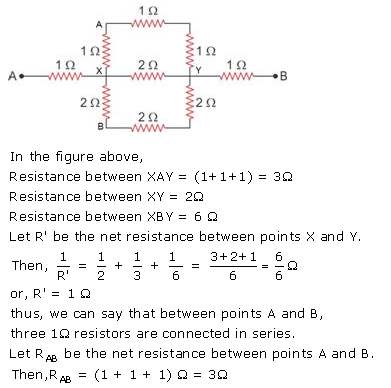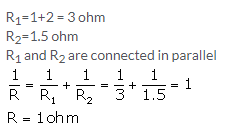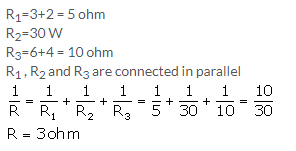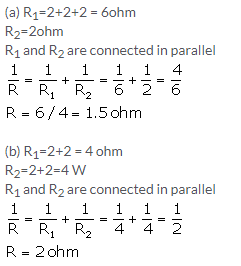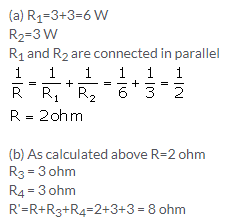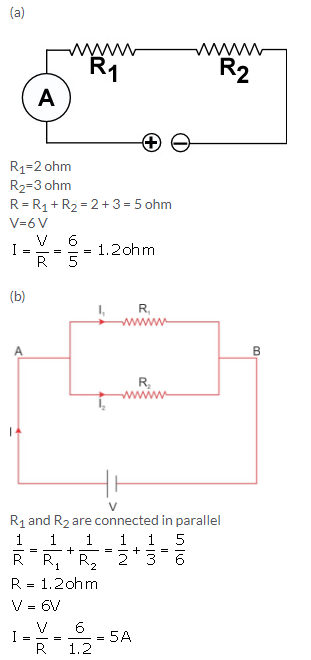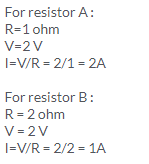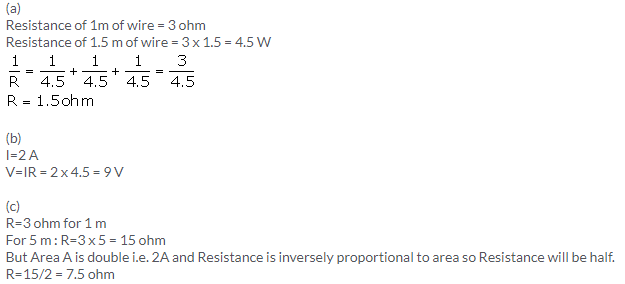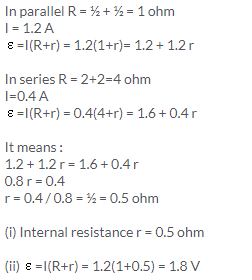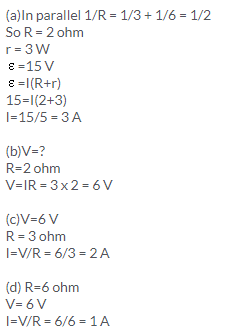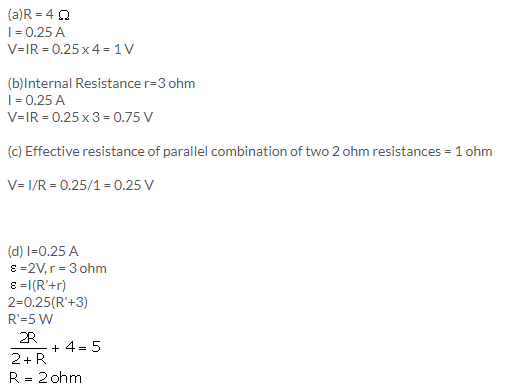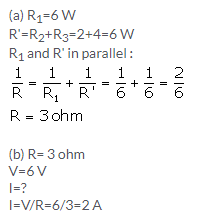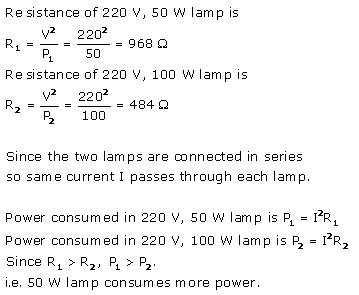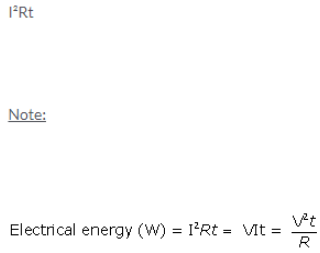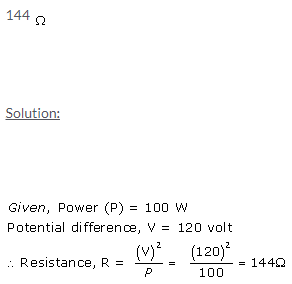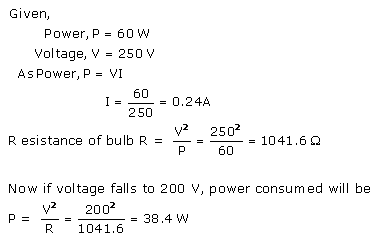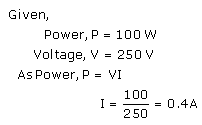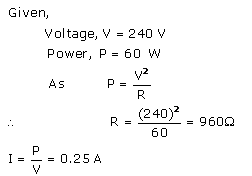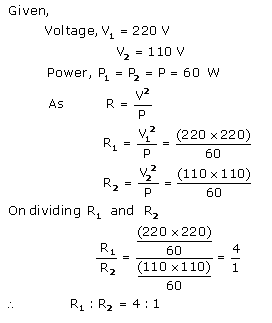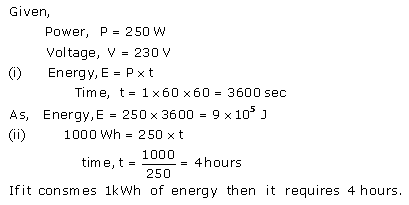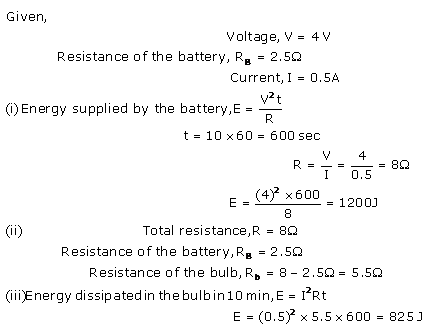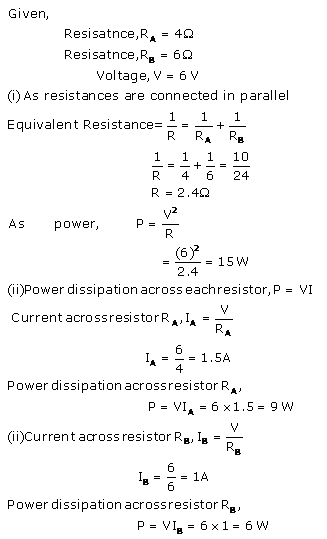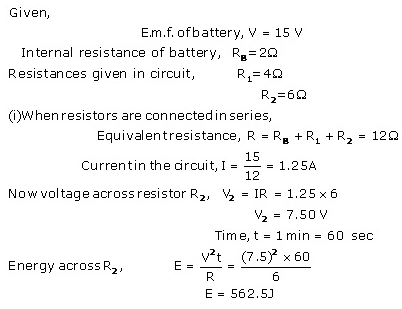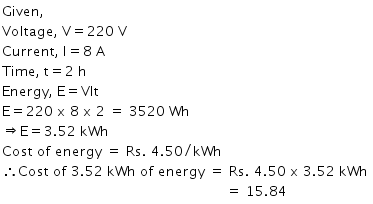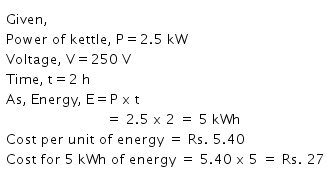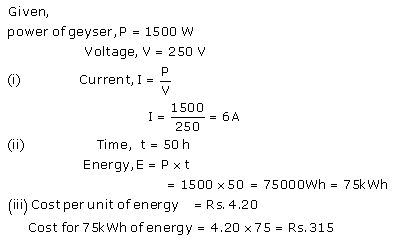Selina Concise Physics Class 10 ICSE Solutions Spectrum
APlusTopper.com provides step by step solutions for Selina Concise ICSE Solutions for Class 10 Physics Chapter 6 Spectrum. You can download the Selina Concise Physics ICSE Solutions for Class 10 with Free PDF download option. Selina Publishers Concise Physics for Class 10 ICSE Solutions all questions are solved and explained by expert teachers as per ICSE board guidelines.
Download Formulae Handbook For ICSE Class 9 and 10
ICSE SolutionsSelina ICSE Solutions
Selina ICSE Solutions for Class 10 Physics Chapter 6 Spectrum
Exercise 6(A)
Solution 1.
The deviation produced by the prism depends on the following four factors:
- The angle of incidence – As the angle of incidence increases, first the angle of deviation decreases and reaches to a minimum value for a certain angle of incidence. By further increasing the angle of incidence, the angle of deviation is found to increase.
- The material of prism (i.e., on refractive index) – For a given angle of incidence, the prism with a higher refractive index produces a greater deviation than the prism which has a lower refractive index.
- Angle of prism- Angle of deviation increases with the increase in the angle of prism.
- The colour or wavelength of light used- Angle of deviation increases with the decrease in wavelength of light.
Solution 2.
The deviation caused by a prism increases with the decrease in the wavelength of light incident on it.
Solution 3.
Speed of light increases with increase in the wavelength.
Solution 4.
Red colour travels fastest and Blue colour travels slowest in glass.
Solution 5.
Colour of light is related to its wavelength.
Solution 6.
(i) 4000 Å to 8000 Å
(ii) 400 nm to 800 nm
Solution 7.
(i) For blue light, approximate wavelength = 4800 Å
(ii) For red light, approximate wavelength = 8000 Å
Solution 8.
Seven prominent colours of the white light spectrum in order of their increasing frequencies:
Red, Orange, Yellow, Green, Blue, Indigo, Violet
Solution 10.
Green, Yellow orange and red have wavelength longer than blue light.
Solution 11.
A glass prism deviates the violet light most and the red light least.
Solution 12.
(a) In vacuum, both have the same speeds.
(b) In glass, red light has a greater speed.
Solution 13.
The phenomenon of splitting of white light by a prism into its constituent colours is known as dispersion of light.
Solution 14.
When white light is incident on the first surface of a prism and enters in glass, light of different colours due to different speeds in glass, is refracted or deviated through different angles. Thus the dispersion of white light into its constituent colours takes place at the first surface of prism. Thus the cause of dispersion is the change in speed of light with wavelength or frequency.
Solution 15.
When white light is incident on the first surface of a prism and enters in glass, light of different colours due to different speeds in glass, is refracted or deviated through different angles. Thus the dispersion of white light into its constituent colours takes place at the first surface of prism.
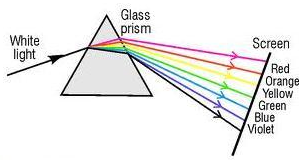
On the second surface, only refraction takes place and different colours are deviated through different angles. As a result, the colours get further separated on refraction at the second surface (violet being deviated the most and red the least).
Solution 16.
The colour band obtained on a screen on passing white light through a prism is called the spectrum.
Solution 17.
(a) Violet, Indigo, Blue, Green, Yellow, Orange, Red.
(b) No, different colours have different widths in the spectrum.
(c) (i) Violet colour is deviated the most. (ii) Red colour is deviated the least.
Solution 18.
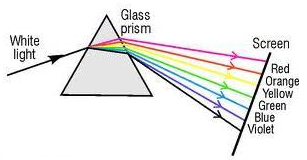
Solution 19.
- Constituent colours of white light are seen on the screen after dispersion through the prism.
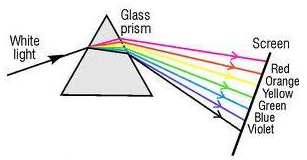
- When a slit is introduced in between the prism and screen to pass only the light of green colour, only green light is observed on the screen.
- From the observation, we conclude that prism itself produces no colour.
Solution 20.
- If a monochromatic beam of light undergoes minimum deviation through an equi-angular prism, then the beam passes parallel to the base of prism.
- White light splits into its constituent colours i.e., spectrum is formed.
- We conclude that white light is polychromatic.
Solution 1 (MCQ).
Both deviation and dispersion.
Hint: When a white light ray falls on the first surface of a prism, light rays of different colours due to their different speeds in glass get refracted (or deviated) through different angles. Thus, the dispersion of white light into its constituent colours takes place at the first surface of prism.
Solution 2 (MCQ).
The colour of the extreme end opposite to the base of the prism is red.
Hint: The angle of deviation decreases with the increase in wavelength of light for a given angle of incidence. Since the red light has greatest wavelength, it gets deviated the least and is seen on the extreme end opposite to the base of prism.
Numericals
Solution 1.
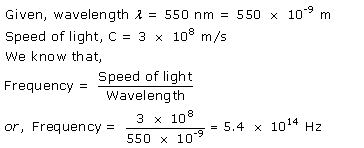
Solution 2.
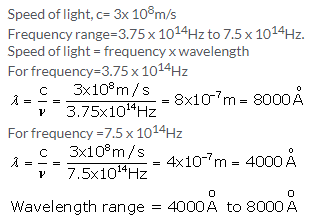
Exercise 6(B)
Solution 1.
(a) Five radiations in the order of their increasing frequencies are:
Infrared waves, Visible light, Ultraviolet, X-rays and Gamma rays.
(b) Gamma rays have the highest penetrating power.
Solution 2.
(a) Gamma rays, X-rays, infrared rays, micro waves, radio waves.
(b) Microwave is used for satellite communication.
Solution 3.
(a) Gamma ray.
(b) Gamma rays have strong penetrating power.
Solution 5.
(a) X-rays are used in the study of crystals.
(b) It is also used to detect fracture in bones.
Solution 8.
4000 Å to 8000 Å
Solution 9.
(i) Infrared
(ii) Ultraviolet
Solution 10.
The part of spectrum beyond the red and the violet ends is called the invisible spectrum as our eyes do not respond to the spectrum beyond the red and the violet extremes.
Solution 11.
(a) infrared radiation
(b) ultra violet radiation
Solution 12.
(i) Ultraviolet rays-wavelength range 100Å to 4000Å
(ii) Visible light-wavelength range 4000Å to 8000Å
(iii) Infrared radiations-wavelength range 8000Å to 107Å
Solution 13.
(i) Infrared radiations are longer than 8 x 10-7m.
(ii) ultraviolet radiations are shorter than 4 x 10-7 m.
Solution 14.
Solution 15.
(i) Microwaves are used for satellite communication.
(ii) Ultraviolet radiations are used for detecting the purity of gems, eggs, ghee etc.
(iii) Infrared radiations are used in remote control of television and other gadgets.
(iv) Gamma rays are used in medical science to kill cancer cells.
Solution 16.
Solution 17.
(a) A- Gamma rays, B-infrared radiations
(b) Ratio of speeds of these waves in vacuum is 1:1 as all electromagnetic waves travel with the speed of light in vacuum.
Solution 18.
All heated bodies such as a heated iron ball, flame, fire etc., are the sources of infrared radiations.
The electric arc and sparks give ultraviolet radiations.
Solution 19.
Infrared radiations are the electromagnetic waves of wavelength in the range of 8000Å to 107Å.
Detection: If a thermometer with a blackened bulb is moved from the violet end towards the red end, it is observed that there is a slow rise in temperature, but when it is moved beyond the red region, a rapid rise in temperature is noticed. It means that the portion of spectrum beyond the red end has certain radiations which produce a strong heating effect, but they are not visible. These radiations are called the infrared radiations.
Use: The infrared radiations are used for therapeutic purposes by doctors.
Solution 20.
The electromagnetic radiations of wavelength from 100Å to 4000Å are called the ultraviolet radiations.
Detection: If the different radiations from the red part of the spectrum to the violet end and beyond it, are made incident on the silver-chloride solution, it is observed that from the red to the violet end, the solution remains unaffected. However just beyond the violet end, it first turns violet and finally it becomes dark brown. Thus there exist certain radiations beyond the violet end of the spectrum, which are chemically more active than visible light, called ultraviolet radiations.
Use: Ultraviolet radiations are used for sterilizing purposes.
Solution 21.
- Ultraviolet radiations travel in a straight line with a speed of 3 x 108 m in air (or vacuum).
- They obey the laws of reflection and refraction.
- They affect the photographic plate.
Solution 22.
- Ultraviolet radiations produce fluorescence on striking a zinc sulphide screen.
- They cause health hazards like cancer on the body.
Solution 23.
- Infrared radiations travel in straight line as light does, with a speed equal to 3 x 108m/s in vacuum.
- They obey the laws of reflection and refraction.
- They do not cause fluorescence on zinc sulphide screen.
Solution 24.
Solution 25.
Solution 26.
Solution 27.
- Infrared radiations are used in photography in fog because they are not much scattered by the atmosphere, so they can penetrate appreciably through it.
- Infrared radiations are used as signals during the war as they are not visible and they are not absorbed much in the medium.
- Infrared lamps are used in dark rooms for developing photographs since they do not affect the photographic film chemically, but they provide some visibility.
- Infrared spectrum can be obtained only with the help of a rock-salt prism since the rock-salt prism does not absorb infrared radiations whereas a glass prism absorbs them.
- A quartz prism is used to obtain the spectrum of the ultraviolet radiations as they are not absorbed by quartz, whereas ordinary glass absorbs the ultraviolet light.
- Ultraviolet bulbs have a quartz envelope instead of glass as they are not absorbed by quartz, whereas ordinary glad absorbs the ultraviolet light.
Solution 1 (MCQ).
Gamma rays
Solution 2 (MCQ).
Carbon arc-lamp
Solution 3 (MCQ).
Infrared radiation
Hint: Infrared radiations produce strong heating effect.
Numericals
Solution 1.
(a) Frequency =500MHz =500 x 106Hz
Wavelength= 60 cm=0.6 m
Velocity of wave= frequency x wavelength
= 500x 106 x 0.6=3 x 108m/s
(b) Electromagnetic wave is travelling through air.
Solution 2.

Exercise 6(C)
Solution 1.
When white light from sun enters the earth’s atmosphere, the light gets scattered i.e., the light spreads in all directions by the dust particles, free water molecules and the molecules of the gases present in the atmosphere. This phenomenon is called scattering of light.
Solution 2.
The intensity of scattered light is found to be inversely proportional to the fourth power of wavelength of light. This relation holds when the size of air molecules is much smaller than the wavelength of the light incident.
Solution 3.
Violet colour is scattered the most and red the least as the intensity of scattered light is found to be inversely proportional to the fourth power of wavelength of light.
Solution 6.
Since the wavelength of red light is the longest in the visible light, the light of red colour is scattered the least by the air molecules of the atmosphere and therefore the light of red colour can penetrate to a longer distance. Thus red light can be seen from the farthest distance as compared to other colours of same intensity. Hence it is used for danger signal so that the signal may be visible from the far distance.
Solution 7.
On the moon, since there is no atmosphere, therefore there is no scattering of sun light incident on the moon surface. Hence to an observer on the surface of moon (space), no light reaches the eye of the observer except the light directly from the sun. Thus the sky will have no colour and will appear black to an observer on the moon surface.
Solution 8.
Scattering property of light is responsible for the blue colour of the sky as the blue colour is scattered the most due to its short wavelength.
Solution 9.
As the light travels through the atmosphere, it gets scattered in different directions by the air molecules present in its path. The blue light due to its short wavelength is scattered more as compared to the red light of long wavelength. Thus the light reaching our eye directly from sun is rich in red colour, while the light reaching our eye from all other directions is the scattered blue light. Therefore, the sky in direction other than in the direction of sun is seen blue.
Solution 10.
At the time of sunrise and sunset, the light from sun has to travel the longest distance of atmosphere to reach the observer. The light travelling from the sun loses blue light of short wavelength due to scattering, while the red light of long wavelength is scattered a little, so is not lost much. Thus blue light is almost absent in sunlight reaching the observer, while it is rich in red colour.
Solution 11.
At noon, the sun is above our head, so we get light rays directly from the sun without much scattering of any particular colour. Further, light has to travel less depth of atmosphere; hence the sky is seen white.
Solution 12.
The clouds are nearer the earth surface and they contain dust particles and aggregates of water molecules of sizes bigger than the wavelength of visible light. Therefore, the dust particles and water molecules present in clouds scatter all colours of incident white light from sun to the same extent and hence when the scattered light reaches our eye, the clouds are seen white.
Solution 1 (MCQ).
Blue colour
Hint: When light of certain frequency falls on that atom or molecule, this atom or molecule responds to the light, whenever the size of the atom or molecule comparable to the wavelength of light. The sizes of nitrogen and oxygen molecules in atmosphere are comparable to the wavelength of blue light. These molecules act as scattering centers for scattering of blue light. This is also the reason that we see the sky as blue.
More Resources for Selina Concise Class 10 ICSE Solutions
